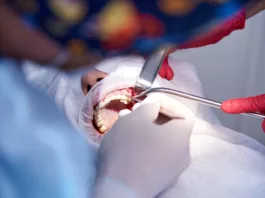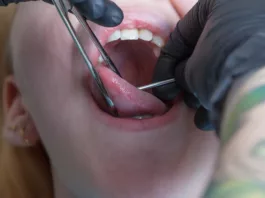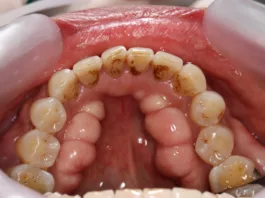What is Breast Reduction Surgery?
Breast reduction surgery, commonly referred to as reduction mammoplasty, involves the removal of breast skin, breast tissue, and fat, followed by reshaping and elevating to create a smaller, more proportionate bust size. This surgery can reduce discomfort and enhance the appearance of large breasts. The negative impact of extremely large breasts on a woman’s life is often underestimated. For those with macromastia, breast reduction surgery can provide immediate relief from pain and tension. It may also boost self-confidence and improve physical activity levels. Breast reduction seeks to make your breasts proportionate to the rest of your body. The procedure could be carried out to ease the pain from big breasts.1Patel, K., & Corcoran, J. (2023). Breast Reduction Surgery in Adolescents. Pediatric annals, 52(1), e31–e35. https://doi.org/10.3928/19382359-20221114-06
Reasons for Breast Reduction
Breast reduction surgery is frequently sought for a variety of compelling reasons. The dimensions of one’s breasts can sometimes lead to both physical and emotional challenges, impacting overall well-being. Excessive breast size may trigger issues such as discomfort in the back, neck, and shoulders, along with skin irritation beneath the breast crease. The additional weight from surplus breast tissue can hinder active lifestyles, curtailing women’s ability to engage in various activities fully. Furthermore, the emotional toll can be significant, with many individuals experiencing heightened self-consciousness as a result of having notably large breasts.
Breast reduction surgery tends to yield positive outcomes for most women who undergo the procedure. Notably, this concern isn’t exclusive to women; men facing conditions like gynecomastia, characterized by excessive enlargement of male breasts, can also encounter these challenges.
Given the substantial nature of this surgical intervention, comprehensive understanding is paramount. Prospective candidates should acquaint themselves with the potential benefits, associated risks, and the anticipated trajectory of the healing process.
Breast reduction surgery is often pursued due to several plausible factors:
- First and foremost, physical discomfort is a common reason. Women with overly large breasts may experience chronic neck, shoulder, and back pain, skin irritation, and rashes in the folds beneath the breasts. The procedure aims to alleviate these discomforts and improve overall physical well-being.
- Breast reduction surgery can significantly enhance one’s quality of life by enabling them to engage in physical activities more comfortably. Large breasts can hinder exercise and sports for many individuals, and reduction surgery can open up new opportunities for a more active lifestyle.
- Lastly, breast size can impact self-confidence and body image. By achieving a more proportional breast size through reduction surgery, individuals often experience a boost in self-esteem and body satisfaction, positively affecting their mental and emotional well-being.
Prerequisites of the Surgery
Pre-op:
Patients need to consult with a certified plastic surgeon before breast reduction surgery. During this session, the surgeon will evaluate the patient’s overall health, medical history, and breast size. They will review the patient’s objectives and anticipated treatment outcomes and describe the process in detail, including any possible hazards and side effects. It may be necessary to perform pre-operative testing to ensure the patient is a good candidate for the procedure, such as blood work and mammograms.2Wampler, A. T., Powelson, I. A., Homa, K., & Freed, G. L. (2021). BREAST-Q Outcomes before and after Bilateral Reduction Mammaplasty. Plastic and reconstructive surgery, 147(3), 382e–390e. https://doi.org/10.1097/PRS.0000000000007605
The Surgery:
Depending on how extensive the process is, breast reduction surgery is carried out under general anesthesia and often takes several hours. The surgeon will make incisions on the breasts to remove extra skin, fat, and tissue. For a more realistic appearance, the nipples can also be moved. Then, the breasts are raised and contoured for a more proportionate outcome. Sutures are used to close the incisions, and dressings or surgical bras are put on top to aid healing.3Wampler, A. T., Powelson, I. A., Homa, K., & Freed, G. L. (2021). BREAST-Q Outcomes before and after Bilateral Reduction Mammaplasty. Plastic and reconstructive surgery, 147(3), 382e–390e. https://doi.org/10.1097/PRS.0000000000007605
Techniques for Breast Reduction Surgery:
Post-op:
Patients will receive particular post-operative care instructions before being released from the hospital after being observed in a recovery area following breast reduction surgery. Pain medication may be administered to control discomfort during the initial recuperation phase. Following surgery, it’s typical to have swelling, bruising, and discomfort. These side effects will eventually go away.
Breast Reduction Recovery
The full recovery process following breast reduction surgery typically spans from two to six weeks. In the immediate aftermath of the surgery, it’s advisable to allocate at least one week for rest, which might extend to a few weeks, depending on individual circumstances. Your surgeon will guide the timing of follow-up appointments to remove bandages and stitches. Any strenuous physical activities should be avoided for at least one-month post-surgery to ensure proper healing.
Expect to encounter fatigue and breast tenderness in the aftermath of the procedure. Your surgeon will prescribe oral pain medication to manage any discomfort during the initial days. It’s crucial to abstain from heavy lifting to support the healing process. It’s not uncommon for certain patients to experience emotional reactions, including feelings of depression, following the surgery. While this can be normal, it’s essential to discuss any concerns with your medical practitioner openly.
Complications:
Like any surgical process, breast reduction surgery has certain possible dangers and problems while being typically safe. These include the potential for infection, hemorrhage, alteration of nipple sensation, scarring, and, in very rare instances, poor wound healing. Following the surgeon’s recommendations and follow-up consultations can help you spot and address potential problems.5Vitug, A. F., & Newman, L. A. (2007). Complications in breast surgery. Surgical Clinics of North America, 87(2), 431-451
Other risks may include:
- Edema
- Bruising
- Persistent pigmentation changes in the skin.
- Deeper structures, including the nerves, blood vessels, muscles, and lungs, might sustain temporary or permanent injury.
- Fat necrosis, which causes alterations in breast and nipple sensation, may occur in deep-lying fatty tissue of the epidermis.6American Society of Plastic Surgeons. (n.d.). Breast reduction: Safety. Retrieved from https://www.plasticsurgery.org/reconstructive-procedures/breast-reduction/safety
Benefits Of Reduction Mammoplasty:
In addition to relieving physical discomfort like back and neck pain, breast reduction surgery also improves posture and makes it easier to engage in physical activity. Achieving a more balanced and proportionate breast size also frequently leads to patients feeling more positive about themselves and their bodies.7Iwuagwu, O. C., Walker, L. G., Stanley, P. W., Hart, N. B., Platt, A. J., & Drew, P. J. (2006). Randomized clinical trial examining psychosocial and quality of life benefits of bilateral breast reduction surgery. Journal of British Surgery, 93(3), 291-294.
Possible Side effects of Breast Reduction surgery
Breast reduction surgery, while often successful in addressing various concerns, can also carry potential side effects.8Brown, M. H., Weinberg, M., Chong, N., Levine, R., & Holowaty, E. (1999). A cohort study of breast cancer risk in breast reduction patients. Plastic and reconstructive surgery, 103(6), 1674-1681. It’s important to be aware of these possible outcomes before undergoing the procedure. Some potential side effects include:
Asymmetry:
While surgeons strive for symmetry, slight breast asymmetry is possible post-surgery. This can be due to differences in healing, tissue density, or other factors.
Pain and Discomfort:
Pain and discomfort are common after surgery, but these symptoms are usually temporary and manageable with pain medication.
Loss of Breastfeeding Ability:
Breast reduction surgery might impact a woman’s ability to breastfeed, as some milk ducts and glandular tissue could be affected.9Kraut RY, Brown E, Korownyk C, Katz LS, Vandermeer B, Babenko O, Gross MS, Campbell S, Allan GM. The impact of breast reduction surgery on breastfeeding: Systematic review of observational studies. PLoS One. 2017 Oct 19;12(10):e0186591. doi: 10.1371/journal.pone.0186591. PMID: 29049351; PMCID: PMC5648284.
Hematoma or Seroma:
Accumulation of blood (hematoma) or fluid (seroma) in the surgical area is possible. These might require drainage or further treatment.
Anesthesia Risks:
Anesthesia carries its own risks, including allergic reactions, breathing difficulties, or adverse reactions to medications.
Unsatisfactory Cosmetic Outcome:
Despite careful planning, there’s a chance that the cosmetic outcome may not align with your expectations.
Emotional Effects:
Some individuals might experience emotional fluctuations post-surgery, which could include feelings of sadness, anxiety, or dissatisfaction.
Nipple & Areola Changes:
Changes in nipple size, shape, or position may occur after surgery.
Delayed Recovery:
Recovery times can vary, and some individuals might experience a longer recovery period than anticipated.
It’s crucial to have a thorough discussion with a board-certified plastic surgeon before undergoing breast reduction surgery.
Breast Reduction Scars
Scarring following breast reduction surgery is a natural outcome of the healing process. Surgeons create incisions to reshape the breasts, which then evolve into scars as the body produces scar tissue to mend the wound. Typically appearing as fine lines with hues distinct from the skin tone, these scars gradually fade and blend. Adhering to postoperative guidelines and discussions with medical professionals can help minimize and manage breast reduction scars. It’s important to care for the scars, maintain cleanliness, and promptly address any discomfort or issues that may arise during recovery.10Torresetti, M., Scalise, A., & Di Benedetto, G. (2021). The “Arrow Flap” Technique in Reduction Mammaplasty: Combining Short Scars, Narrow Base, and High and Persistent Breast Projection. Annals of plastic surgery, 87(6), e113–e120. https://doi.org/10.1097/SAP.0000000000002898
Non-Surgical Alternatives for Breast Lift
While surgical breast reduction is a well-known solution for addressing issues related to breast size, there are also non-surgical options available that focus on lifting and firming the breasts. Non-surgical breast lift procedures can provide some degree of lifting and firming but are generally not effective for significant breast reduction. These procedures are more suitable for improving the appearance of sagging breasts rather than substantially reducing breast size. Here are some non-surgical methods to consider:
- BodyTite
- Laser Treatments
- Thermage
- Thread lifts
- Botox Injections
- Breast Reduction Exercises
Conclusion
In conclusion, to attain breast size that is proportionate to your physique, breast reduction surgery eliminates extra breast skin, glandular tissue, and fat. If this surgery is performed to treat a medical condition, it might be reimbursed by health insurance. This technique should produce long-lasting results. However, your breasts may vary over time as you age, gain or lose weight, experience hormonal changes, or experience gravity. Discuss the advantages and disadvantages of breast reduction surgery with your doctor and the expected outcomes.
Refrences
- 1Patel, K., & Corcoran, J. (2023). Breast Reduction Surgery in Adolescents. Pediatric annals, 52(1), e31–e35. https://doi.org/10.3928/19382359-20221114-06
- 2Wampler, A. T., Powelson, I. A., Homa, K., & Freed, G. L. (2021). BREAST-Q Outcomes before and after Bilateral Reduction Mammaplasty. Plastic and reconstructive surgery, 147(3), 382e–390e. https://doi.org/10.1097/PRS.0000000000007605
- 3Wampler, A. T., Powelson, I. A., Homa, K., & Freed, G. L. (2021). BREAST-Q Outcomes before and after Bilateral Reduction Mammaplasty. Plastic and reconstructive surgery, 147(3), 382e–390e. https://doi.org/10.1097/PRS.0000000000007605
- 4Lee HJ, Ock JJ. How to Improve Projection in Nipple Reconstruction: A Modified Method Using Acellular Dermal Matrix Disk and Fragments. Plast Reconstr Surg. 2019 Apr;143(4):698e-706e.
- 5Vitug, A. F., & Newman, L. A. (2007). Complications in breast surgery. Surgical Clinics of North America, 87(2), 431-451
- 6American Society of Plastic Surgeons. (n.d.). Breast reduction: Safety. Retrieved from https://www.plasticsurgery.org/reconstructive-procedures/breast-reduction/safety
- 7Iwuagwu, O. C., Walker, L. G., Stanley, P. W., Hart, N. B., Platt, A. J., & Drew, P. J. (2006). Randomized clinical trial examining psychosocial and quality of life benefits of bilateral breast reduction surgery. Journal of British Surgery, 93(3), 291-294.
- 8Brown, M. H., Weinberg, M., Chong, N., Levine, R., & Holowaty, E. (1999). A cohort study of breast cancer risk in breast reduction patients. Plastic and reconstructive surgery, 103(6), 1674-1681.
- 9Kraut RY, Brown E, Korownyk C, Katz LS, Vandermeer B, Babenko O, Gross MS, Campbell S, Allan GM. The impact of breast reduction surgery on breastfeeding: Systematic review of observational studies. PLoS One. 2017 Oct 19;12(10):e0186591. doi: 10.1371/journal.pone.0186591. PMID: 29049351; PMCID: PMC5648284.
- 10Torresetti, M., Scalise, A., & Di Benedetto, G. (2021). The “Arrow Flap” Technique in Reduction Mammaplasty: Combining Short Scars, Narrow Base, and High and Persistent Breast Projection. Annals of plastic surgery, 87(6), e113–e120. https://doi.org/10.1097/SAP.0000000000002898





